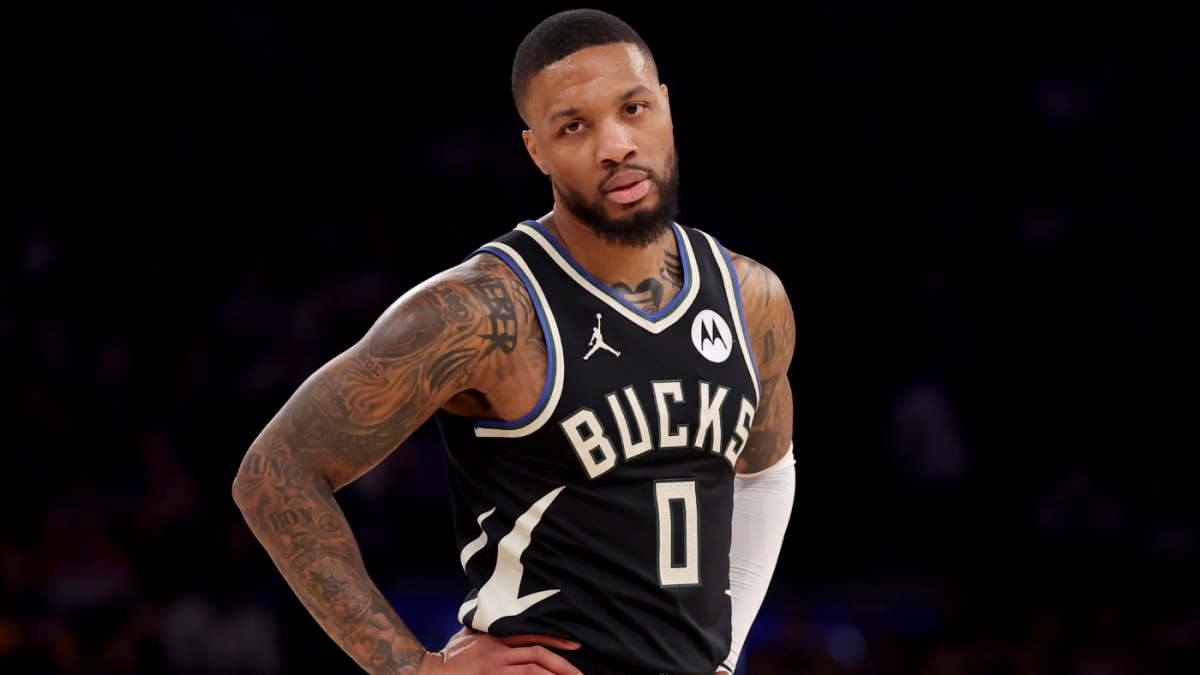The Milwaukee Bucks’ offseason moves have sent shockwaves through the NBA, with the team’s decision to waive Damian Lillard and sign Myles Turner marking a dramatic shift in their championship aspirations. This bold gamble raises critical questions about the team’s future, the motivations behind these decisions, and the potential impact on their competitive standing. By examining the specifics of these moves, the underlying factors, and the potential risks and rewards, we can gain a clearer understanding of the Bucks’ strategic direction.
The Lillard Experiment: A Failed Synergy
The acquisition of Damian Lillard was intended to elevate the Bucks to elite status, pairing his elite scoring and playmaking with Giannis Antetokounmpo’s dominance and Khris Middleton’s versatility. However, the experiment quickly unraveled, revealing fundamental flaws in the fit. Lillard’s ball-dominant style clashed with Antetokounmpo’s need for control, leading to offensive stagnation. Injuries further compounded the issue, with Middleton’s absence preventing the trio from developing the necessary chemistry. Lillard’s efficiency also declined, and his defensive shortcomings became more apparent.
The final nail in the coffin was Lillard’s season-ending Achilles tear during the playoffs. This injury forced the Bucks to confront the reality of a potentially diminished Lillard and the need to re-evaluate their long-term plans. The decision to waive him was not just about performance but also about financial flexibility and roster construction.
The Myles Turner Acquisition: A Defensive Upgrade
Myles Turner’s arrival addresses a critical need for the Bucks: rim protection and floor spacing. At 28, Turner offers a younger, more athletic alternative to Brook Lopez, who has seen his mobility decline with age. Turner’s ability to block shots and shoot threes will complement Antetokounmpo’s game, allowing the Bucks to play a more versatile defense and open up the floor offensively.
However, Turner is not without flaws. His rebounding is inconsistent, and his defensive consistency has been questioned at times. Whether he can provide the level of rim protection the Bucks need remains to be seen. Still, his potential to improve the team’s defense and spacing makes him a valuable addition.
Financial and Long-Term Implications
Waiving Lillard and stretching his contract is a complex financial maneuver designed to create immediate cap space. By spreading Lillard’s remaining salary over five seasons, the Bucks reduce their short-term cap hit, allowing them to sign Turner and potentially make other moves. However, this decision comes with long-term financial consequences. The Bucks will continue paying Lillard for the next five years, limiting their ability to pursue other free agents or re-sign key players in the future.
This financial gamble underscores the Bucks’ urgency to contend for a championship. They believe Turner is a better fit and that his presence will significantly improve their chances of winning in the short term, even if it means sacrificing future flexibility. The risk is that this move could leave the Bucks in a financial bind down the road, especially if Turner does not perform as expected.
The Giannis Factor: Keeping the Superstar Happy
Giannis Antetokounmpo is the cornerstone of the Bucks’ franchise, and his happiness is paramount. The Lillard experiment failed to deliver the desired results, potentially jeopardizing Giannis’ long-term commitment. By acquiring Turner, the Bucks are signaling their willingness to make bold moves to improve the team and address its weaknesses.
Turner’s presence could make Giannis’ life easier on both ends of the floor, potentially solidifying his commitment to Milwaukee. However, there is also a risk that Giannis could be unhappy with the decision to move on from Lillard, especially if he believes the team did not give the partnership enough time to develop. Managing Giannis’ expectations and ensuring he is fully on board with the team’s new direction will be crucial for the Bucks’ long-term success.
Risks and Rewards of the Gamble
The Bucks’ decision to waive Lillard and sign Turner is a high-risk, high-reward gamble. The potential rewards are clear: improved rim protection, floor spacing, and a rejuvenated roster better suited to contend for a championship. However, the risks are equally significant: long-term financial constraints, potential chemistry issues, and the possibility that Turner fails to live up to expectations.
The success of this move will depend on several factors. Turner must integrate seamlessly into the team’s system and perform at a high level. The remaining players must step up and fill the void left by Lillard’s departure. The coaching staff must effectively utilize Turner’s skills and create a cohesive offensive and defensive system.
If these factors fall into place, the Bucks could emerge as a legitimate title contender. However, if the move backfires, the Bucks could find themselves stuck in mediocrity, with limited financial flexibility and a disgruntled superstar.
Conclusion: A Bold Bet on the Future
The Milwaukee Bucks have made a bold and potentially franchise-altering decision to waive Damian Lillard and sign Myles Turner. This move represents a significant shift in strategy, a willingness to take risks, and a commitment to building a team around Giannis Antetokounmpo that can compete for championships. While the risks are undeniable, the potential rewards are too enticing to ignore. The Bucks have essentially bet their future on Turner, hoping that his presence will unlock the team’s full potential and propel them to the top of the NBA. Only time will tell if this gamble pays off, but one thing is certain: the Milwaukee Bucks have once again become one of the most intriguing teams in the league.












